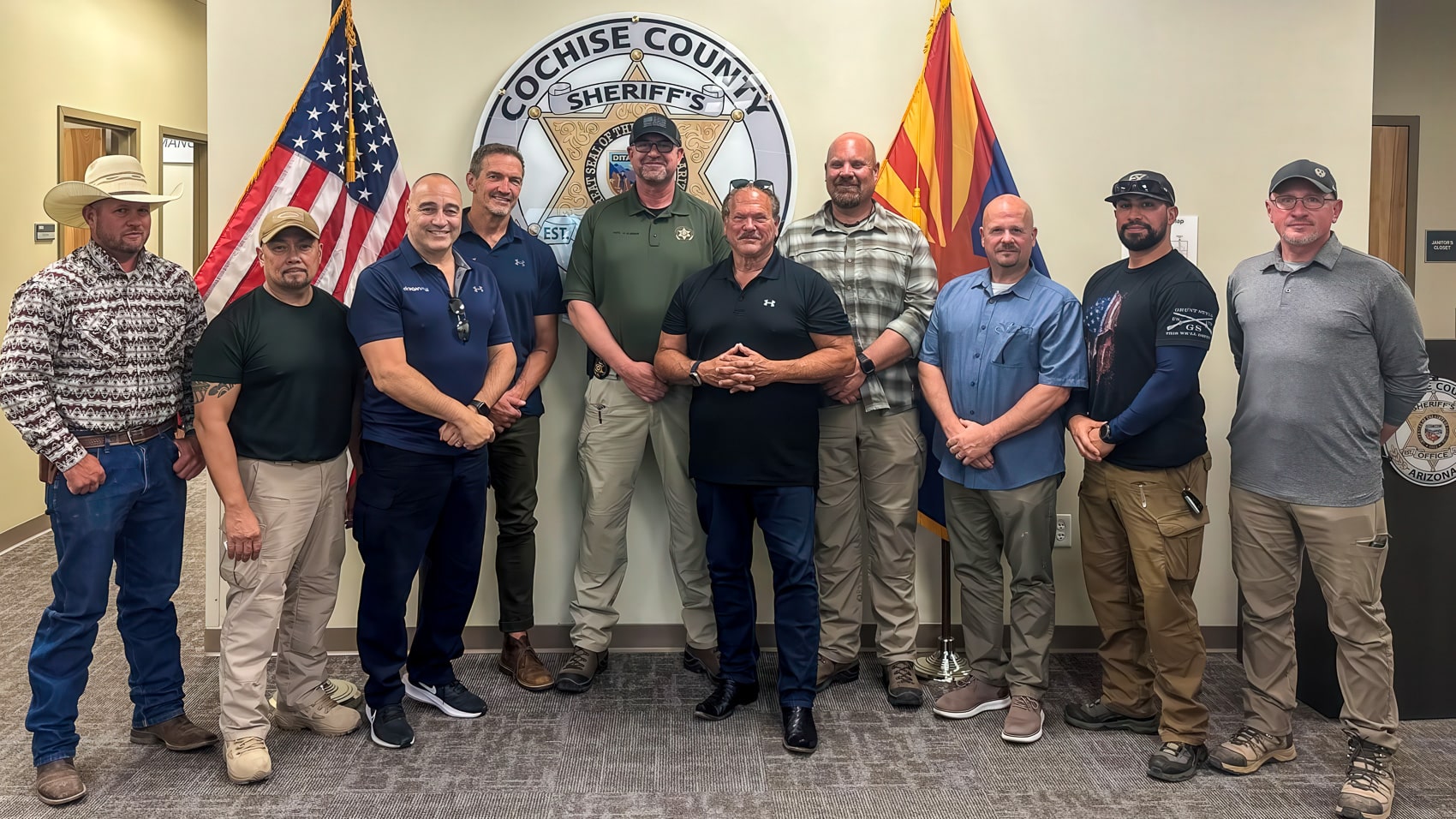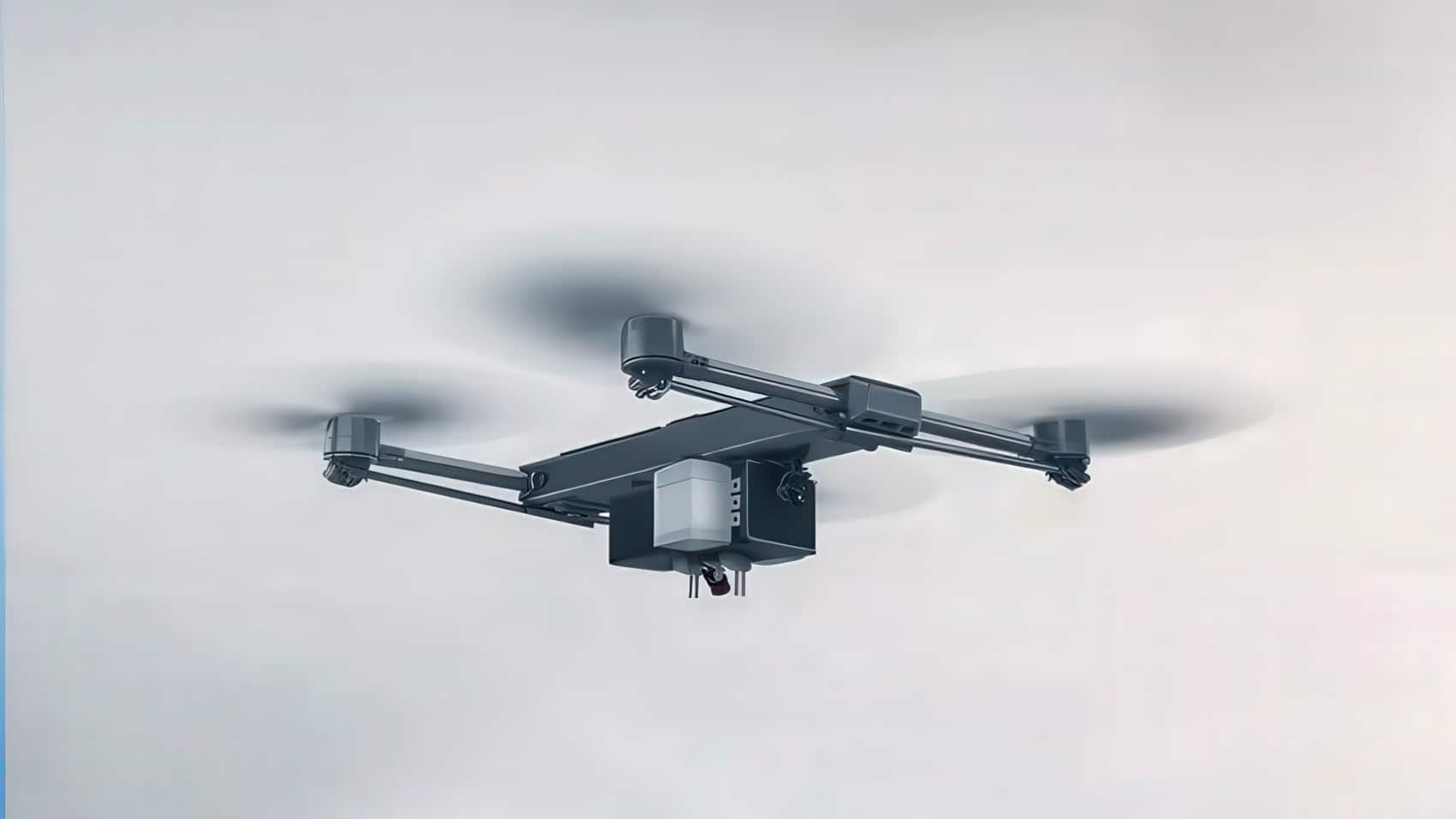Draganfly Border Drones Fly 7 Hours, Lift 200 Lbs, & Scan Heartbeats for Southern Arizona Sheriff’s Office

Hello fellow drone pilots! Raise your hand if you’ve ever cursed that blinking battery icon just as the perfect light hits. Now, imagine your drone not just sipping juice, but guzzling gas like a lawnmower, flying longer than your average workday, and hauling enough gear to stock a mini-campsite. Sounds like sci-fi? That’s exactly what Draganfly – the granddaddy of commercial drone companies – is building for the Cochise County Sheriff’s Office (CCSO) down on the Arizona border. And let me tell you, the tech specs read like a drone pilot’s wildest daydream… with a side of “whoa, is that even possible?”
From 30-Minute Hustle to 7-Hour Endurance: The Hybrid Beast
The CCSO isn’t new to the drone game. They’ve got birds. But Captain Tim Williams lays it out plain: their current fleet taps out after a measly 30 minutes. “We know there’s activity miles and miles away,” he told KTAR News. “We attempt it… and we run out of battery.” Oof. We’ve all felt that frustration on a smaller scale, right? Scrambling to capture that last shot before the dreaded auto-land kicks in.
Enter Draganfly. CEO Cameron Chell doesn’t mince words: the tech CCSO needed didn’t exist. So, they invented it. Meet their solution: a hybrid monster drone, spanning nine feet tip-to-tip. Forget just big batteries. This thing runs on two combustion engines – think high-tech, drone-sized motorcycle engines – paired with a sophisticated battery management system.

The engines don’t just provide thrust; they generate power to keep the batteries topped up mid-flight. The result? A jaw-dropping, marathon 7 hours of continuous flight time.
Let that sink in. That’s enough time to fly from sunrise coffee to lunchtime sandwiches… twice over.
Makes fretting over squeezing 28 minutes out of your Mini 3 Pro feel like a different universe.
Muscle in the Sky: Hauling Hope (and Heavy Payloads)
But endurance is only half the story. Cochise County’s rugged terrain demands muscle. Draganfly’s heavy-lift drones are already known for lifting over 200 pounds. That’s not just cameras and sensors, folks. That’s serious cargo capacity. Captain Williams sees life-saving potential: “With a hundred-pound payload, these things could bring medical supplies, water. There’s an unknown limit to what this thing could do.”
Imagine the impact:
- Search & Rescue: Delivering survival gear, warm blankets, or even a stretcher attachment deep into inaccessible canyons within minutes, not hours.
- Humanitarian Aid: Dropping water, food, or basic medical kits safely and precisely across vast, remote stretches of desert borderland.
- Persistent Eyes: Carrying heavier, more powerful sensor suites for extended surveillance – thermal, LiDAR, comms relays – without constant battery swaps.
Chell is honest about the trade-off, something we hobbyists understand intimately: adding payload does eat into flight time. Hauling 200 lbs won’t get you the full 7 hours. But even cutting it in half is still a staggering 3.5 hours of heavy lifting – a game-changer for missions where ground access is slow, dangerous, or impossible. They’re actively working to marry their endurance tech with their heavy-lift prowess for the ultimate workhorse.
Pilot Options & The “Flying Stethoscope”
How do deputies actually control these sky giants? Flexibility is key:
- Manual Mode: Just like you and me wrestling the sticks on a windy day (though hopefully with a smoother controller!).
- Semi-Autonomous Mode: Piloted remotely by an operator sitting comfortably back at Sheriff’s HQ, extending the crew’s reach far beyond line-of-sight.
- Fully Autonomous Mode: Pre-programmed routes and missions executed by the drone itself, ideal for long, repetitive patrol corridors.
Now, here’s where it gets straight out of a spy movie. Chell claims these Draganfly drones aren’t just eyes in the sky; they’re potentially flying medical scanners. Using advanced sensors (likely a combination of high-res optics, thermal imaging, and specialized lidar or radar), Chell states: “Right from the drone we can calculate heart rate, respiratory rate, blood pressure, blood oxygen level, temperature of the body. So, we can even detect infectious diseases coming in.”
Think about that. A drone hovering hundreds of feet up could potentially identify someone in distress with a spiking fever or dangerously low blood oxygen before ground crews even reach them. It’s like strapping a paramedic’s toolkit onto a helicopter, shrunk down to drone scale. The implications for rapid medical assessment in remote areas are profound, though it certainly raises eyebrows about privacy and the limits of remote biometrics. Is it a lifesaver or a step towards dystopia? Probably depends on who’s flying it and why.
Why This Buzzes Beyond the Border
Okay, let’s be real. Most of us won’t be piloting nine-foot gas-powered behemoths for the Sheriff’s department anytime soon (though, imagine the bragging rights at the flying field!). So why should the hobbyist care beyond the sheer “cool factor”?
Because military and law enforcement tech always trickles down. Remember when GPS stabilization was cutting-edge military tech? Or obstacle avoidance? Now they’re standard on sub-$500 drones. Draganfly pushing the boundaries on hybrid power systems, extreme endurance, heavy lift capabilities, and sophisticated autonomous sensing paves the way for future consumer and prosumer innovations:

- Hybrid Power for Pros (and Maybe Enthusiasts?): Imagine your heavy-lift cinema rig flying for 2-3 hours on a hybrid system, not 25 minutes. Game over for battery anxiety on big shoots.
- Smarter Autonomy: The AI and sensor fusion developed for complex border missions could lead to vastly more intelligent “follow-me” modes, automated inspections, or safer BVLOS operations for approved commercial pilots.
- Payload Revolution: Refined heavy-lift tech means more accessible, powerful platforms for professional aerial photography, surveying, delivery trials, or even your dream of an airborne camera platform smoother than a gimbal on a cloud.
- Advanced Sensors: While heartbeat scanning might stay niche, the underlying sensor tech could improve terrain mapping, subject tracking, or safety features for everyone.
As Captain Williams put it, they’re building “something that doesn’t exist.” Draganfly stepped up. The first tests with CCSO deputies kick off this November. If successful, the ripple effects through the entire drone industry could be massive. Your next drone might owe its best features to tech proven on the Arizona border.
DroneXL’s Take
Alright, fellow pilots, let’s land this thing. As someone who lives and breathes drones – mostly for the sheer joy of flight and capturing beauty from above – this Cochise County project is a fascinating, double-edged propeller.
On one hand, the tech is undeniably jaw-dropping. Seven hours! Hybrid power! Hauling 200 pounds like it’s a grocery bag! Remote vital sign monitoring?! It pushes the boundaries of what drones can do in ways that were pure fantasy just a few years ago. The potential for saving lives through rapid humanitarian aid delivery or pinpoint search and rescue in brutal terrain is immense and genuinely exciting. As a tech enthusiast, I can’t help but geek out over the engineering marvel here. And yes, the idea that some of this wizardry might eventually trickle down to make our hobby drones more capable, reliable, or longer-lasting? Sign me up for that future.
On the other hand… it gives me pause. Drones with this level of persistent surveillance capability, flying for hours on end, equipped with sensors that can allegedly read your body’s secrets from the sky… deployed in the complex, often fraught environment of border security? It’s impossible to ignore the privacy concerns and the potential for mission creep. As much as I champion responsible drone use and safety, I also believe fiercely in freedom and reasonable expectations of privacy. This level of tech in any law enforcement context needs robust oversight, clear rules of engagement, and absolute transparency about what data is collected and how it’s used. The “flying stethoscope” bit, while potentially lifesaving in medevac scenarios, feels particularly intrusive if misapplied.
My take? Innovation for good – like saving lives in the desert – is worth pursuing. Draganfly’s engineering feat deserves applause. But with great power (and flight time!) comes great responsibility. As a community, we drone pilots should celebrate the technological leaps but also remain vocal advocates for ethical deployment, strong privacy safeguards, and ensuring this powerful tech ultimately serves and protects all people – not just watches them. The sky’s potential is limitless, but our humanity must guide how we use it. In the end, we need to test drive this baby to deliver our last opinion!
Photographs courtesy of Draganfly
Discover more from DroneXL.co
Subscribe to get the latest posts sent to your email.
Check out our Classic Line of T-Shirts, Polos, Hoodies and more in our new store today!

MAKE YOUR VOICE HEARD
Proposed legislation threatens your ability to use drones for fun, work, and safety. The Drone Advocacy Alliance is fighting to ensure your voice is heard in these critical policy discussions.Join us and tell your elected officials to protect your right to fly.
Get your Part 107 Certificate
Pass the Part 107 test and take to the skies with the Pilot Institute. We have helped thousands of people become airplane and commercial drone pilots. Our courses are designed by industry experts to help you pass FAA tests and achieve your dreams.

Copyright © DroneXL.co 2025. All rights reserved. The content, images, and intellectual property on this website are protected by copyright law. Reproduction or distribution of any material without prior written permission from DroneXL.co is strictly prohibited. For permissions and inquiries, please contact us first. DroneXL.co is a proud partner of the Drone Advocacy Alliance. Be sure to check out DroneXL's sister site, EVXL.co, for all the latest news on electric vehicles.
FTC: DroneXL.co is an Amazon Associate and uses affiliate links that can generate income from qualifying purchases. We do not sell, share, rent out, or spam your email.



















